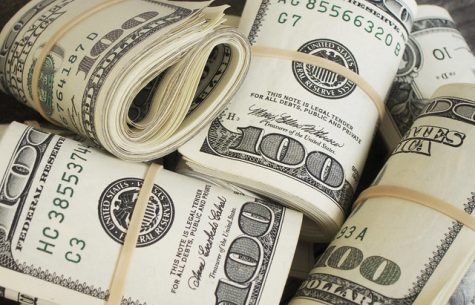Sports and their two-faced fronts on politics
How perspectives on social activism has changed over time
Long since were the years of Muhammad Ali’s stance against the Vietnam War and Tommie Smith and John Carlos’s Olympic raised power salute. Since then, either from the fear of backlash, a loss in fan engagement, or sponsorships, the world of sports has relatively tried to remain impartial to the fiery world of politics — that is, until now.
American sports has considerably changed from a platform of entertainment to a place of social activism. In a national survey conducted after Colin Kaepernick’s famous kneel in 2016, while 50% of fans agreed with the statement that sports and politics should not mix due to the amount of influence athletes hold over fans, only 20% supported moves of activism and the remaining 30% did not side with either choice. By Aug. 2020, the same survey found that 70% of fans wanted teams and leagues to support athlete activism and their athletes to be involved with the movement for racial justice by utilizing their large platform for positive change.
This has been seen in different ways: Some follow Kaepernick and either kneel during the anthem or stay in the locker room, several scrawl messages on their cleats, many wear clothing with prints that call for action and others refurbish their place of play with slogans such as “Black Lives Matter.” Certainly a transition between a dominantly nationalistic climate to the politically vocal environment of today is one getting used to, but this shift ultimately proves to be of moral service as players reciprocate the support of their audience.
“On the one hand, you see the patriotism being sold to fans by the leagues,” said author and ESPN senior writer Howard Bryant on ABC News’ ‘Perspective’ podcast. “Now, you’re seeing the protests being demonstrated by the players on the field. […] Are [fans] willing to simply embrace the polarization? […] Can these two images, which are in direct conflict with each other […] both coexist?”
Courageousness cannot be without risk, however. It is well known that after Kaepernick’s refusal to stand down from his outspokenness, the consequences of his actions had cost him his career. Though, his sacrifice in turn had paved the way for a new era in sports where athletes feel the need to no longer be players bound by contracts but instead people with a great audience that would listen to their voice. In a rare setting, the response we see would turn from backlash into endorsements. Kaepernick, for example, had been signed by Nike in 2019 with his campaign slogan being, “Believe in something. Even if it means sacrificing everything.”
“[Athlete participation] is important because now they’re actually willing to risk something that belongs to them, which is their money,” said Bryant. “At the same time, they are in a very good position to risk some of this because they make so much money. […] America is obsessed with [celebrities], money [and] visibility […]. [Professional sports] are [not actually pioneering but rather they are] following the public.”
Such criticisms are not a relatively new phenomenon as Dr. Edwards, a professor emeritus at the University of California, Berkeley, frames the long history of Black athletes’ attempts at social impact in terms of “waves.”
Athletes of the first wave, between the years 1920’s and 1930’s, represented the fight to establish Black athletes as legitimate in the eyes of white fans. The second wave, during post-World War II, broke racial lines in their respective sports, leading to desegregation in athletics. The third wave encompassed the 1960’s Black Power and civil rights movements when athletes spoke out defiantly about racism and social justice in America that earned them condemnation and a reputation as “angry Black men.”
Today, in this upcoming fourth wave is a great reflection of its predecessor with a climate more welcoming to bring forth social change. For example, The Women’s National Basketball Association has consistently been a leader in many fights for social change since its culmination. In comparison to the previous ones, this wave has more involvement. It is stronger, it has more persistence and it has the will that may allow it to last long enough to completely change the status quo. A revolution of transformation is coming and athletes are working to make it happen.









